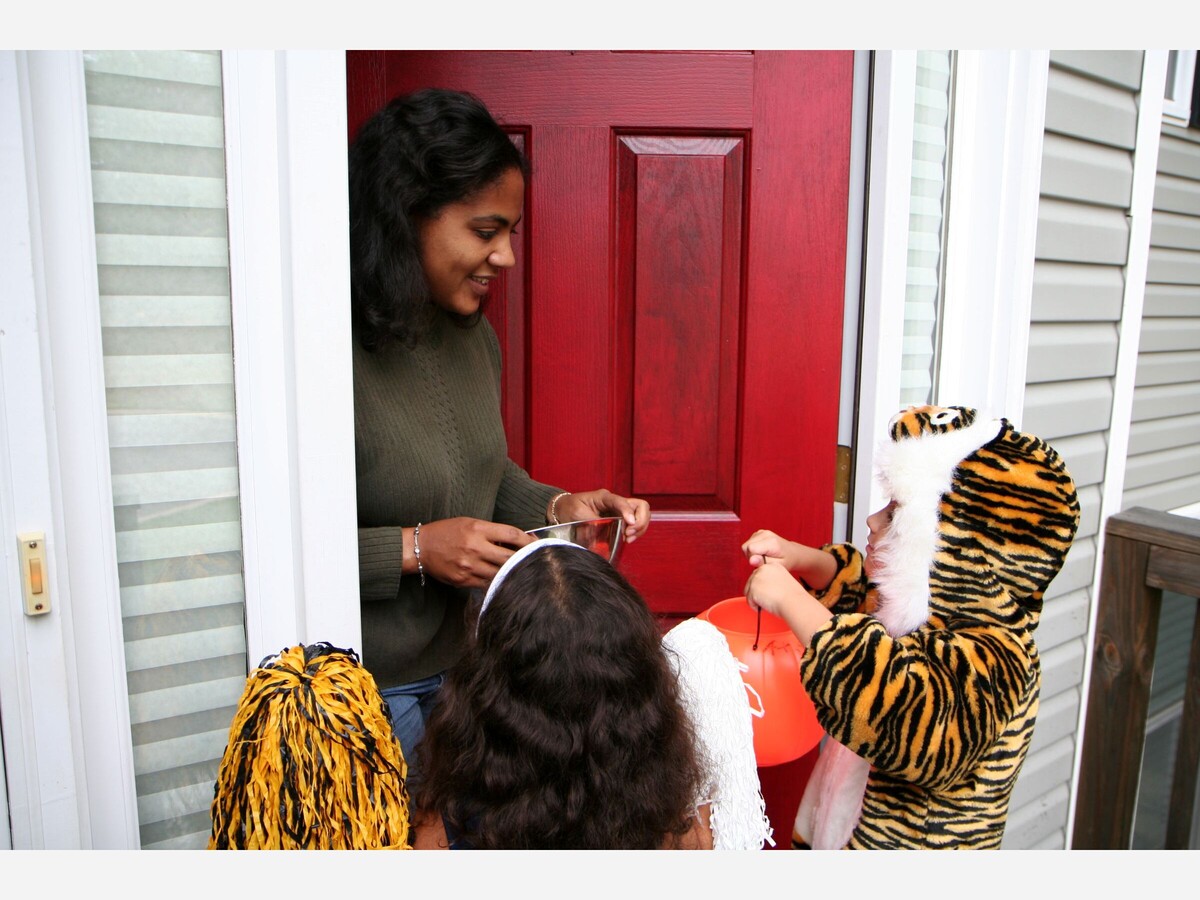Image


Kettering, Ohio – The Communities of Kettering, Moraine, Oakwood, West Carrollton, Centerville, and Miamisburg have announced their 2021 Halloween Beggars Night. All six communities will host simultaneous Beggars Nights Sunday, October 31, 2021, from 6:00 to 8:00 P.M.
Most people probably know that Beggars Night, also known as Trick or Treat, is a Halloween celebration where children dress up in costumes and go door to door for candy. Residents participating often decorate their homes and yards and signal their participation by leaving their front porch light on during the event.
Not everyone decides to hand out candy on Beggars Night. Those not participating turn their front porch lights off. Those Trick or Treating should respect the decision of residents not to participate and not stop at houses that have their front porch light turned off.
Halloween Trick or Treating is a long standing community. Almost all of us remember doing it as children ourselves, but where did the tradition come from? According to History.com, the history of Beggars Night is just a bit murky. That seems fitting for a holiday that plays on mystery and spookiness.
Although murky, History.com says that the holiday has been around more than a Century and its origins seem to be rooted in ancient Celtic festivals, early Roman Catholic holidays, medieval practices, and even British politics.
Apparently, the Celts held the Samhain festival. This festival was celebrated on October 31. The festival consisted of people gathering to light bonfires to honor the dead who they believed returned on Samhain. Celt villagers also disguised themselves in costumes to drive off phantom visitors.
According to History.com, when Christianity made its way to the Celtic lands, Samhain gave way to All Souls’ Day, which was originally celebrated on November 2nd. This holiday was for honoring the dead.
During the holiday, the poor would visit the homes of wealthy families who handed out pastries called “soul cakes” in exchange for a promise to pray for the souls of the homeowners’ dead relatives. Later this turned into a practice called “souling” where children went to homes asking for gifts of food, money, or ale.
The Scottish and Irish added the tradition of “guising. This was a practice of wearing costumes and accepting offerings from households. In order to receive the offering, the individuals had to sing a song, recite a poem, tell a joke, or perform some other form of trick.
History.com says that the British political contribution to the origins of Beggars Night come from the celebration of Guy Fawkes Night. The British also called this celebration “Bonfire Night. The British held Guy Fawkes Nights to mark the failure of the “Gunpower Plot of 1605, a plot to blow up Britain’s parliament in an attempt to remove King James !. During the celebrations, British children wore masks, carried effigies, and begged for pennies.
Guy Fawkes day made it across the Atlantic to the United States with British settlers. By the early 20th Century, Irish and Scottish Americans had revived the traditions of “souling” and “guising”. By the 1920s, rowdy youngsters had added pranks to the American Halloween tradition. Pranks grew more prevalent throughout the Great Depression. Some believed that Trick or Treating was popularized in the U.S. by communities seeking to curtail the pranks. But Trick or Treating initially didn’t last long because of World War II, which saw heavy sugar rationing.
Once the War’s sugar rationing ended, the Baby Boom generation re-popularized Trick or Treating and it has been an American Halloween staple ever since, with millions of children participating in Beggars Night annually.
While Beggars Night can be loads of fun for children, there are some safety tips that law enforcement recommends families follow to make sure that your kids stay safe while having fun on Halloween.
1. Children should travel in groups with at least one adult.
2. Children should care a flashlight, stay on sidewalks, and always look both ways before crossing streets. Also, children and parents should put away the electronic devices to pay attention to your surroundings, especially when crossing streets.
3. Children should never enter the homes or cars of strangers.
4. Children should stick to familiar well-lit areas.
5. Children should not eat treats until they get home. Once you get the treats home, before your children start eating them, inspect the treats for tampering. Of course also make sure your children aren’t eating anything they are allergic to.
6. Participants should also dress appropriately for the weather – Beggars Night is not rescheduled because of bad weather. Children should also wear brightly colored outfits to make themselves visible to motorists.
Speaking of motorists, its not just up to parents and children to stay safe on Halloween. Its also important that motorists take extra precautions when driving on Halloween.
1. Watch for children walking on roadways, medians, and curbs. Pay special attention, watching for children, when going through intersections.
2. Enter and exit driveways and alleys carefully.
3. Be on the lookout for children possibly wearing dark clothing.
4. Never drink and drive.
Now that when Beggars Night will be, get those costumes ready for your kids so that you can all go have fun!